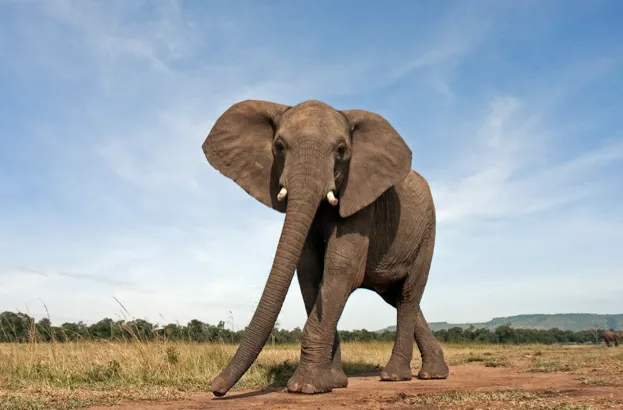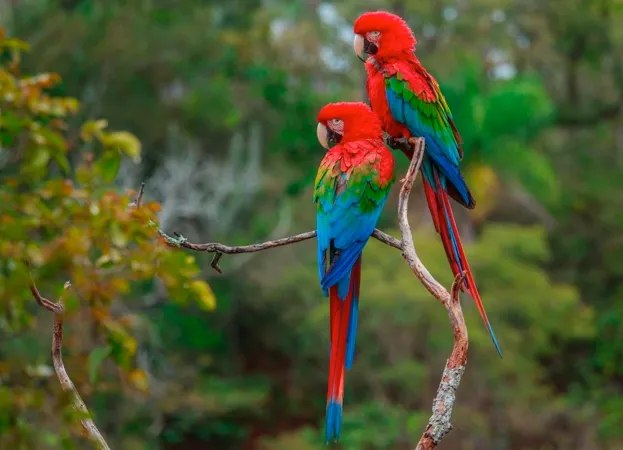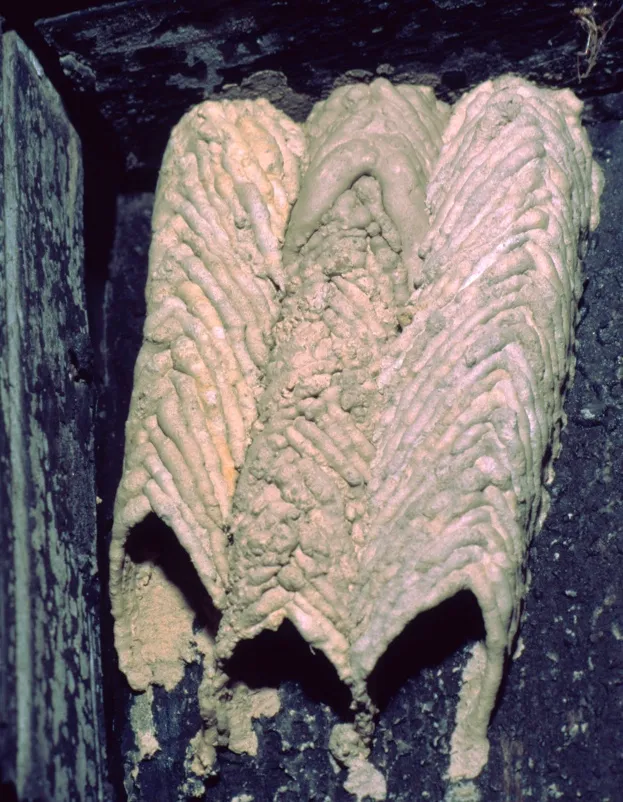House martins build their nests from mud © Arterra / Getty
1. Safe place to raise chicks
House martins and swallows both build their nests by collecting mud in their bills and mixing it with grass stems to make a cup with a small entrance at the top. The mud cup is then lined with feathers to insulate the chicks.
2. Cooling off

An African elephant © Anup Shah / Getty
African elephants have many adaptations and behavioural mechanisms that cools them down during the hot savannah days.
One strategy is to kick soil into water to create a thick mud body-mask for protection against the sun, heat and insects.
3. Minerals

Red and green macaws in Buraco das Araras, Brazil © Mint Images / Art Wolfe / Getty
The term given to animals that eat soil or clay substrates is geophagia and has been observed in a number of animals in the rainforest such as macaws, butterflies and big cats.
They are after the rich minerals and salt in the clay such as iron and magnesium.
Evidence indicates male butterflies benefit more from the sodium uptake as it aids in reproductive success, with the precious nutrients often transferred to the female during mating.
4. Detox
Despite fruit-eating bats of the Amazon having a mineral rich diet from the high intake of fruit, they have been observed eating clay from the ground of the rainforest.
But they’re not mineral deficient, they’re after the detoxifying effects of the minerals from consuming large doses of toxins from ripe fruit.
5. Mud for home

The organ-pipe mud-dauber makes it nest using mud © MyLoupe / UIG / Getty
Many invertebrates use mud and soil to form architecturally elaborate homes such as the mound-building organ-pipe mud-dauber.
The female mud-dauber, or mud-wasp, shapes the mud into a pile and partitions it into brood chambers where she will lay eggs and store several invertebrates for her young to eat.
Unlike many invertebrates, the male stays at the nest and will guard nest materials and ward off any parasites.
